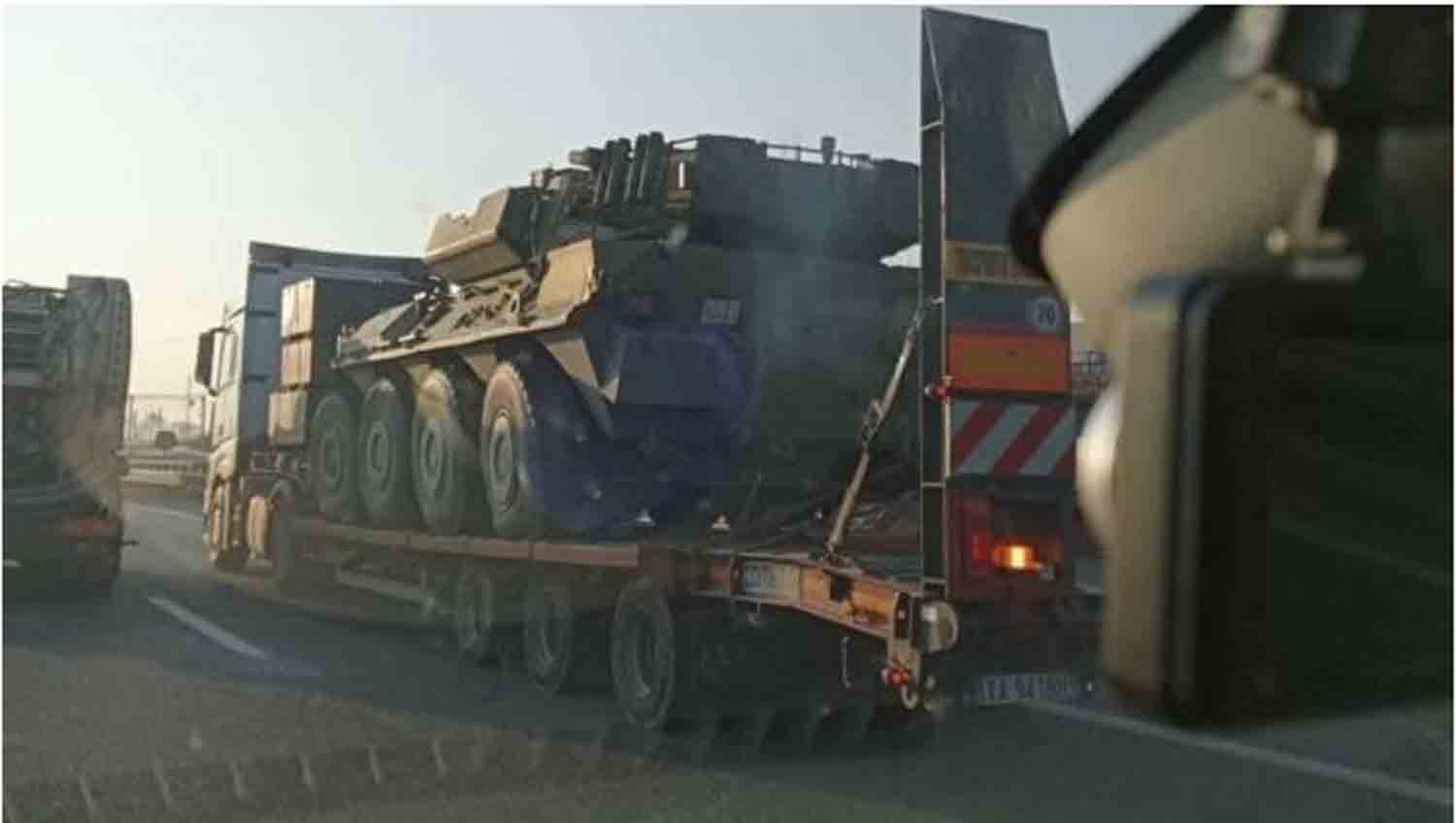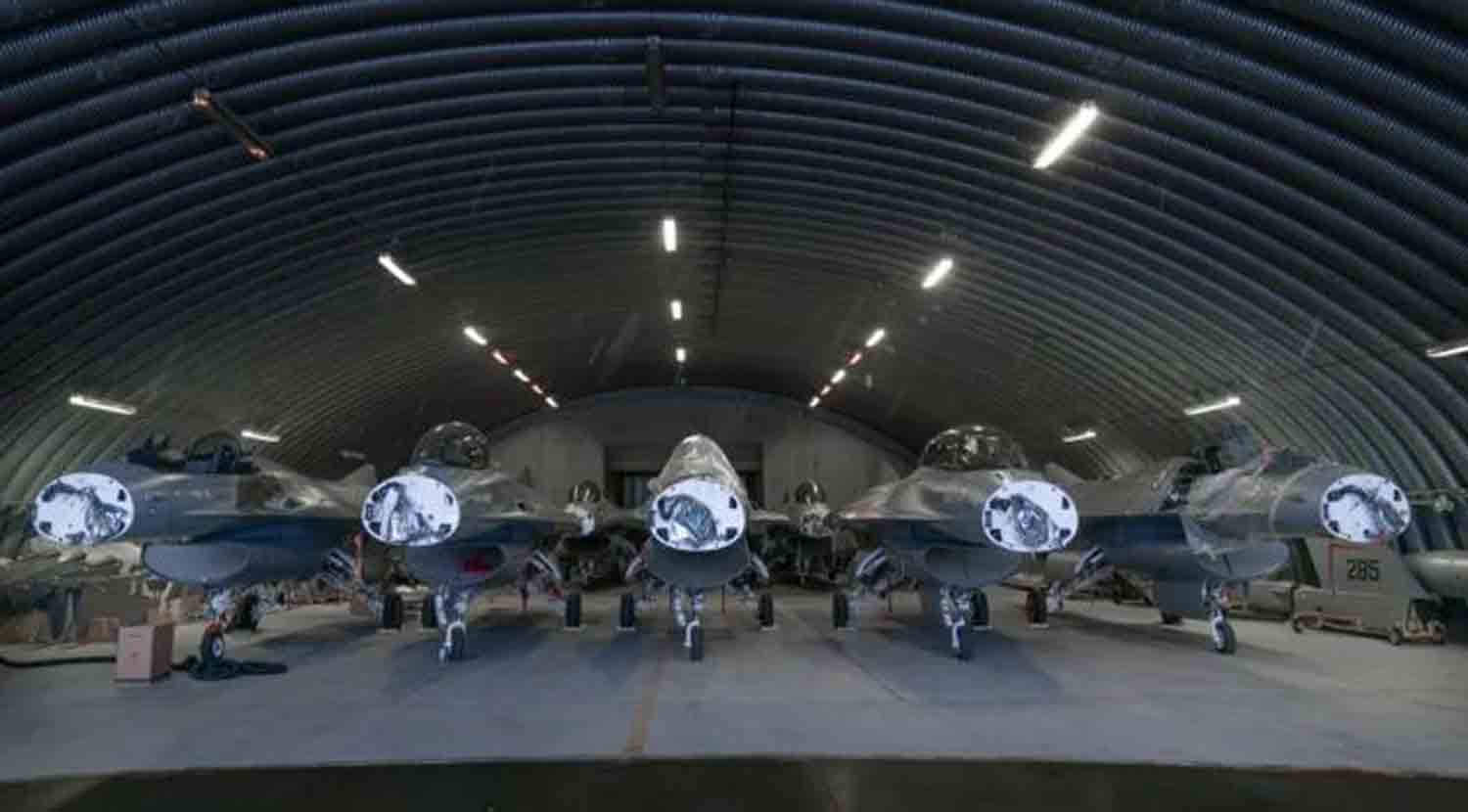Reports from the Italian segment of the social media platform X indicate that Italy might be preparing to send its B1 Centauro light wheeled tanks to Ukraine.
While information is limited, some observant users claim to have seen a photograph of a convoy transporting these armored vehicles, raising questions about their intended destination. Although there has been no official statement from Rome, the online discussions suggest a possible increase in Italy’s military assistance to Ukraine as the conflict continues.
Speculation regarding Italy’s potential transfer of these nimble tank destroyers to Ukraine’s military has been circulating since 2022, yet tangible proof has been hard to come by.
In April of that year, Italian media, including la Repubblica, reported that the Italian Ministry of Defense was considering a new round of military support for Ukraine, with the B1 Centauro—an eight-wheeled vehicle equipped with a cannon—among the options being evaluated.
The aim was to enhance Kyiv’s military capabilities without jeopardizing Italy’s own security, a challenging task for a nation that has traditionally been discreet about its military contributions to Ukraine. Subsequently, in May 2023, videos emerged showing a train carrying Centauros traveling through southern Italy near Naples, leading to theories that they were en route north—potentially to Ukraine via a European supply chain.
Analysts observed that the vehicles displayed Italian markings, but the absence of an official declaration left the rumors unconfirmed. Some speculated that refurbished units, which had been retired as Italy phased them out, might be discreetly dispatched.
Rome’s history of discreet military deliveries, such as the unannounced transfer of M109L self-propelled howitzers, has only intensified speculation. However, despite ongoing discussions, there have been no confirmed sightings of Centauros in Ukraine—until now, as this recent observation has reignited the conversation.
The B1 Centauro is an impressive example of military design, born from Italy’s Cold War-era demand for a rapid, effective, and deployable anti-tank vehicle. Developed in the 1980s by a collaboration between Iveco Fiat and Oto Melara, it was introduced into service with the Italian Army in 1991 and concluded production in 2006, with approximately 400 units manufactured.
Engineered to deliver firepower comparable to that of a main battle tank like the Leopard 1 while maintaining the agility of a wheeled vehicle, the Centauro has a base weight of around 24 tons—light enough for air transport yet formidable in combat.
Its main weapon is a 105mm rifled gun, a high-pressure, low-recoil cannon that can fire NATO-standard ammunition, including armor-piercing fin-stabilized discarding sabot (APFSDS) rounds capable of engaging tanks at distances of up to 3,000 meters.
Certain variants, particularly those supplied to Oman, are equipped with a more powerful 120mm gun, while the Italian fleet primarily utilizes the 105mm configuration. Additionally, it features a pair of 7.62mm machine guns—one coaxial and another for anti-aircraft purposes—providing adaptability against both infantry and low-flying threats.
The vehicle is powered by an Iveco V6 turbocharged diesel engine, generating 520 horsepower and enabling its eight wheels to reach speeds over 60 miles per hour on roadways. With a full tank, it boasts a range of approximately 500 miles, making it well-suited for swift maneuvers.
Constructed from welded steel, the Centauro’s hull is designed to withstand 14.5mm rounds and shell fragments, offering frontal protection against 25mm fire, with the option for additional bolt-on armor that enhances resistance to 30mm. Its sophisticated fire control system, which includes a thermal imager, laser rangefinder, and digital ballistic computer, allows for accurate targeting while in motion, regardless of the time of day.
The platform’s versatility is demonstrated by variants such as the Freccia infantry fighting vehicle, equipped with a 30mm autocannon, and the Draco anti-aircraft prototype featuring a 76mm gun. However, the B1 model remains the quintessential tank-destroyer, now speculated to be heading to Ukraine.
Should these Centauros be integrated into Ukrainian forces, they could provide advantages that heavier tanks like the Leopard 2 or Abrams may lack: agility and strategic adaptability. The expansive and varied terrain of Ukraine, characterized by extensive road networks and muddy fields, necessitates vehicles capable of quick movements in and out of combat zones without becoming mired.
Weighing half as much as a standard main battle tank, the Centauro’s wheeled configuration alleviates the logistical challenges associated with tracks, which tend to wear out quickly and require significant maintenance—an essential consideration for a military facing prolonged conflict.
Its 105mm gun offers firepower sufficient to engage and destroy tanks, comparable to older Western models already present in Ukraine, such as the Leopard 1, while its chassis allows for rapid repositioning to support infantry or capitalize on breakthroughs.
In contrast to tracked vehicles that typically operate at speeds of 40 miles per hour or less, the Centauro’s highway capabilities and ability to climb 60% gradients could enable Ukrainian commanders to swiftly redeploy it across extensive fronts, from Donbas to the southern steppes.
The Centauro is not without its weaknesses; its lighter armor renders it susceptible to contemporary anti-tank systems such as Javelins and Russian Kornet missiles. However, its superior mobility may allow it to evade threats, offering a hit-and-run capability that heavier tanks find difficult to match. This agility could prove advantageous for Ukrainian offensives, particularly in fast-paced operations where time is of the essence.
Italian analysts have expressed a range of opinions regarding the potential deployment of the Centauro to Ukraine, balancing skepticism with cautious hope. Defense analyst Gianandrea Gaiani, editor of Analisi Difesa, commented in 2023 on the speculation surrounding this transfer: “It’s plausible that Italy might send some B1 Centauros to Ukraine, especially as they are being phased out in favor of the Centauro II. This aligns with our approach of providing discreet support to Kyiv.”
In a tactical assessment, military historian and commentator Paolo Mauri noted: “The Centauro is well-suited for the open terrains of Ukraine, given its speed and firepower. Nevertheless, its light armor makes it vulnerable to modern anti-tank threats. Should it be deployed in Ukraine, it will serve as a significant test of its current operational effectiveness.”
Industry expert Nicholas Drummond, a consultant specializing in land warfare, expressed optimism: “If the B1 Centauro performs successfully in Ukraine, as I anticipate, it will highlight the necessity for larger-caliber weapons on 8×8 platforms. This presents a valuable opportunity to demonstrate its capabilities.”
These perspectives reflect the blend of practicality, intrigue, and strategic considerations surrounding the potential transfer, as observers in Italy await further developments.
Discover more from Defence Talks | Defense News Hub, Military Updates, Security Insights
Subscribe to get the latest posts sent to your email.





